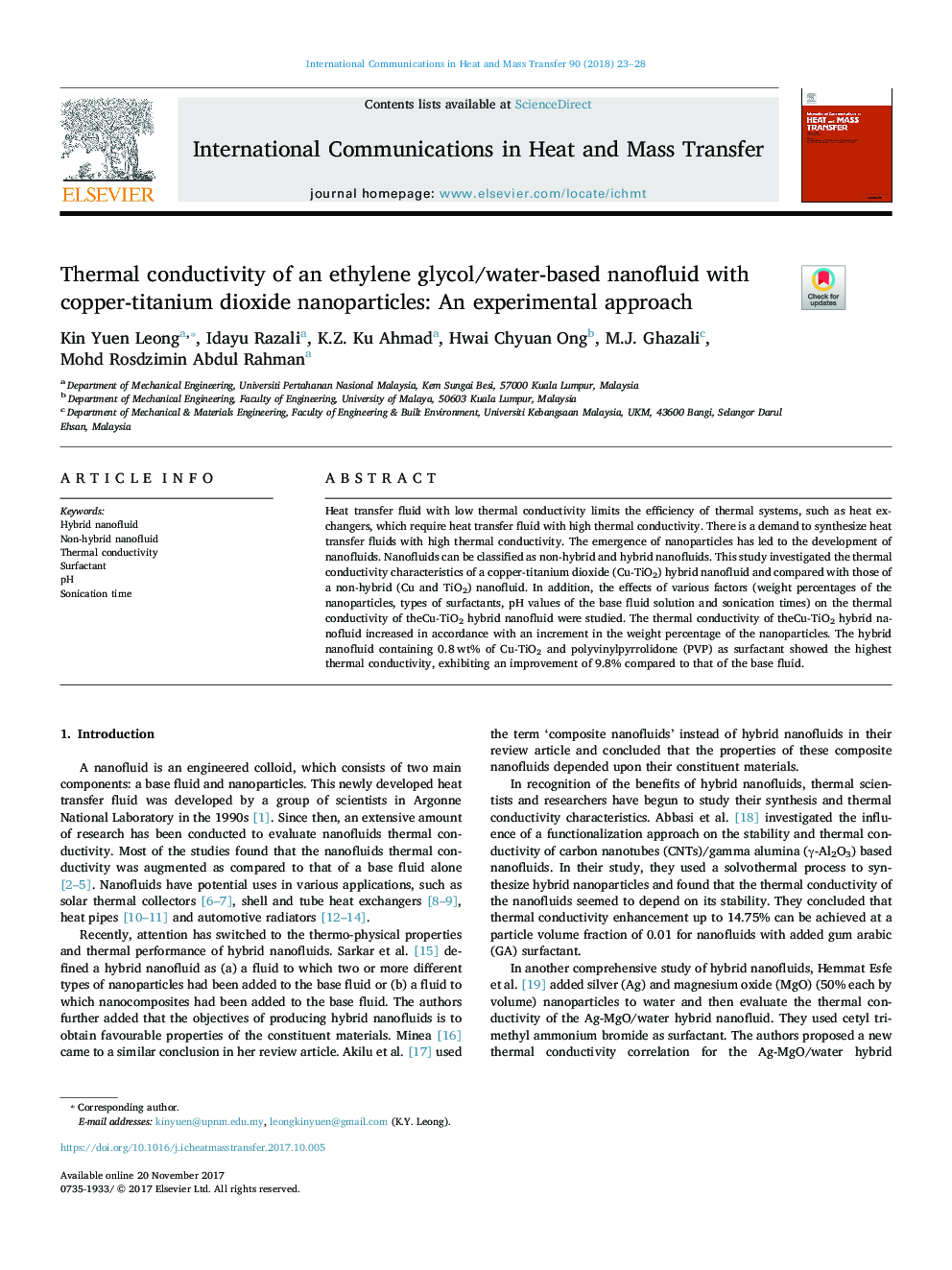| Article ID | Journal | Published Year | Pages | File Type |
|---|---|---|---|---|
| 7053114 | International Communications in Heat and Mass Transfer | 2018 | 6 Pages |
Abstract
Heat transfer fluid with low thermal conductivity limits the efficiency of thermal systems, such as heat exchangers, which require heat transfer fluid with high thermal conductivity. There is a demand to synthesize heat transfer fluids with high thermal conductivity. The emergence of nanoparticles has led to the development of nanofluids. Nanofluids can be classified as non-hybrid and hybrid nanofluids. This study investigated the thermal conductivity characteristics of a copperâtitanium dioxide (Cu-TiO2) hybrid nanofluid and compared with those of a non-hybrid (Cu and TiO2) nanofluid. In addition, the effects of various factors (weight percentages of the nanoparticles, types of surfactants, pH values of the base fluid solution and sonication times) on the thermal conductivity of theCu-TiO2 hybrid nanofluid were studied. The thermal conductivity of theCu-TiO2 hybrid nanofluid increased in accordance with an increment in the weight percentage of the nanoparticles. The hybrid nanofluid containing 0.8Â wt% of Cu-TiO2 and polyvinylpyrrolidone (PVP) as surfactant showed the highest thermal conductivity, exhibiting an improvement of 9.8% compared to that of the base fluid.
Related Topics
Physical Sciences and Engineering
Chemical Engineering
Fluid Flow and Transfer Processes
Authors
Kin Yuen Leong, Idayu Razali, K.Z. Ku Ahmad, Hwai Chyuan Ong, M.J. Ghazali, Mohd Rosdzimin Abdul Rahman,
